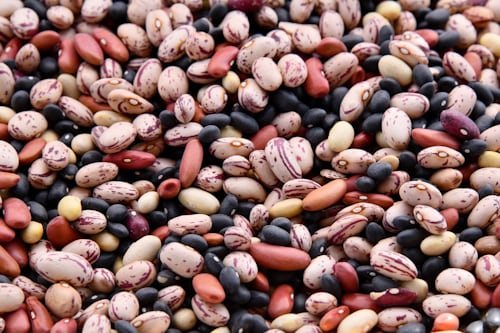What Are The Sustainable Sources Of Quality Protein?
In terms of nutrition, protein is essential. Although most of the protein we eat comes from animals, plant-based proteins can still meet our needs while having fewer adverse effects on the environment. In Sustainable Protein Sources, this article explains how plant, fungal, algal, and insect proteins can replace more expensive and inefficient animal-based protein sources. Sustainable proteins are discussed here, including environmental advantages, population, and consumer trends.
The Sustainable Sources of Quality Protein
The development of novel protein sources is called “sustainable protein.” This could include algae and foods made of cells or plants high in protein. New methods for raising conventional meat and dairy products provide essential changes to lessen our environmental impact.
While many people consume too much protein daily, environmental experts advise shifting to diets with higher amounts of plant-based proteins. Protein is necessary for balanced meals, so here are some sources of sustainable quality protein:
Fish
Aquaculture farming is a prominent source of sustainable proteins. Aquatic organisms are raised in controlled conditions as part of this procedure so they can be marketed as seafood. With a projected increase in worldwide fish production of 204 million tonnes in 2030, up from 179 million tonnes, the sector is already progressing significantly. More than 89% of this growth has come from Asia in particular.
Due to its feed utilization being around two to four times more efficient than livestock like pigs and cattle, aquaculture farming is favored as an environmentally beneficial solution. This reduces feed production, which generates around 45% of the greenhouse gas emissions from cattle farming.
Cultivating lab-grown meat
Cultivated meat, which entails extracting animal cells grown and multiplied in a controlled environment and eventually forming the muscle tissue that people typically consume, is another sustainable source of protein.
With lab-grown meat, people get a sustainable and moral option to continue consuming meat because we manufacture actual meat without harming or felling a single tree.
Consumers of all ages are embracing and enjoying farmed meat more and more. The ability to consume meat without actively supporting animal killing appeals to younger people. Older consumers see the benefits from a nutritional aspect, as the meat would be less likely to contain heavy metals and foreign microorganisms because it is raised in a regulated environment.
Beans
Beans are a staple in many vegan diets since they are affordable, high in protein, and endlessly adaptable. They are also a sustainable option. All beans, from pinto to black-eyed peas, are extremely water-efficient and can replenish the soil in which they are grown. They frequently come packaged in recyclable cans as well. Serve them on top of your avocado toast, sprinkle them over salads, or stir them with hot peppers.
Edible insects
The consumption of insects, which is already common in significant portions of Asia, Africa, and Latin America, is beginning to spread internationally. They have also been suggested as a potential part-solution to the global food issue because they are a plentiful, sustainable source of protein.
All essential amino acids required for optimum human health may be found in insects, which are good providers of protein and lipids. Additionally, they are abundant in vitamins, minerals, and polyunsaturated fatty acids.
Insects can also include chitin, which decreases the digestion of proteins and increases the risk of allergies. Their nutritional value can change depending on the species, developmental stage, and type of feed. The extent to which processing and cooking methods can alter their nutritional content is still entirely unclear.
Legumes

Soybeans, peanuts, and chickpeas are a few examples of legumes and lentils high in protein and fiber. They are free of gluten, rich in potassium, and packed with antioxidants. Additionally, they are a natural supply of salt.
Compared to quinoa, lentils have twice as much protein per serving. They are frequently the least expensive and most environmentally friendly sources of protein. Additionally, drought- and frost-resistant lentils are important in regions with scarce water supplies.
You must exercise caution and keep a close eye on how your body reacts to legumes because this protein source may create digestive issues in some individuals.
Algae
Another alternative protein that is gaining popularity as a potential sustainable meat or fish replacement is algae. The critical omega-3 fatty acids and protein fish need for good health are frequently found in the saltwater algae they eat. So why not just eat algae straight up?
Algae can be purchased whole or as a powder, extract, or gel capsule. It is one of the few plant-based sources of iodine and vitamin B12. Additionally, bioactive peptides and antioxidants are abundant in algae. This can strengthen the body’s inherent defenses against inflammatory disorders. Algae’s nutritional value varies according to the species, growing circumstances, harvesting site, and season. Therefore, if these items were to replace meat or fish, it would be essential to comprehend them.
Eggs
Eggs are a healthy, protein-rich, environmentally friendly commodity. An egg’s edible portion contains 12.6% protein on average. Iron, vitamins A, B12, D, and E, lutein, choline, folate, selenium, zeaxanthin, and antioxidants are also abundant in eggs. These vitamins and minerals support bone and eye health, aid cell renewal, and guard against tissue disintegration. It is best to get organic eggs to ensure they don’t contain harmful chemicals or antibiotics.
Bottomline
With the effects of climate change at an all-time high, the alternative protein sector must contribute to reducing the negative environmental effects of the world’s protein demand to move toward a low-carbon society. By offering a meat substitute, the alternative protein sector has the potential to lower greenhouse gas emissions from the agriculture sector. As consumer demand for them rises, there is potential for growth in the alternative protein market.





